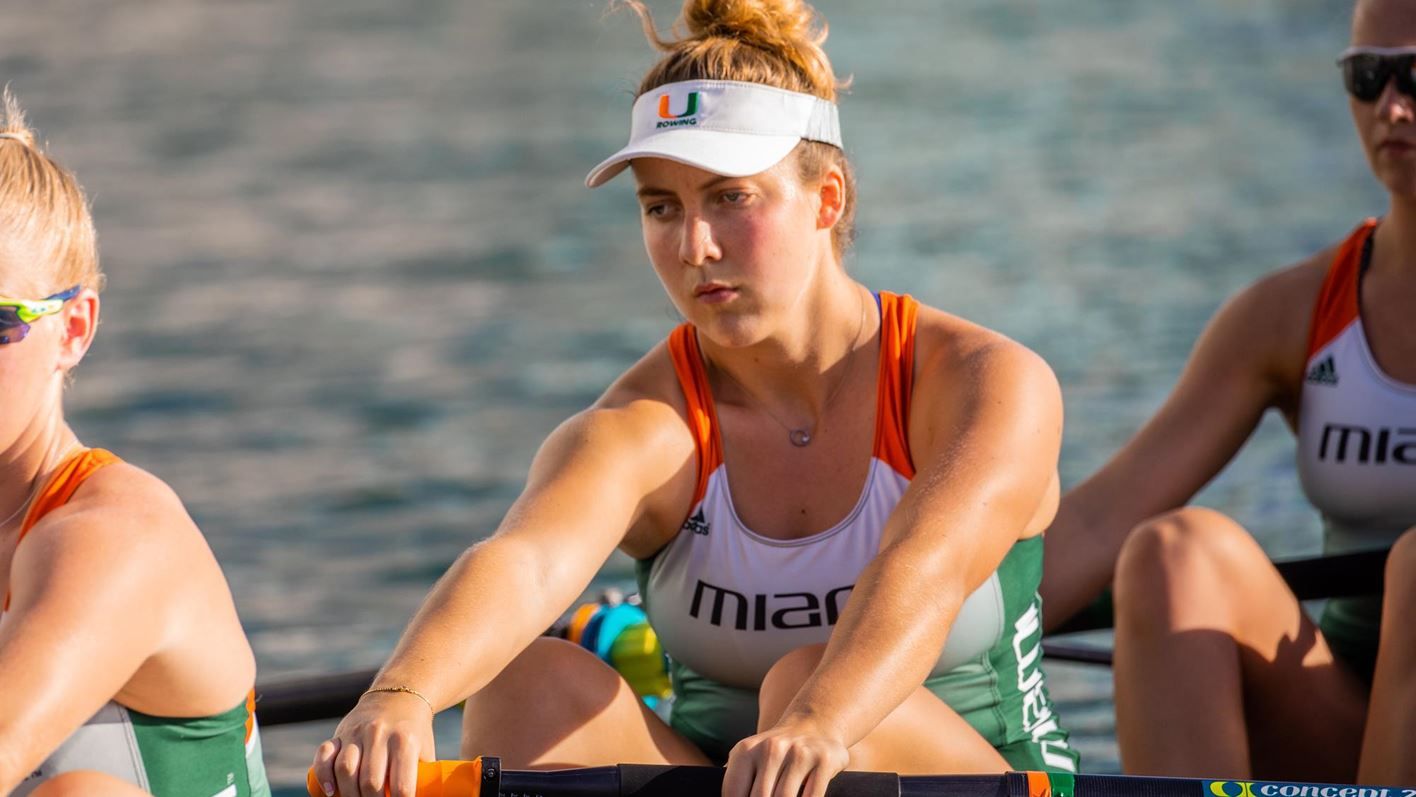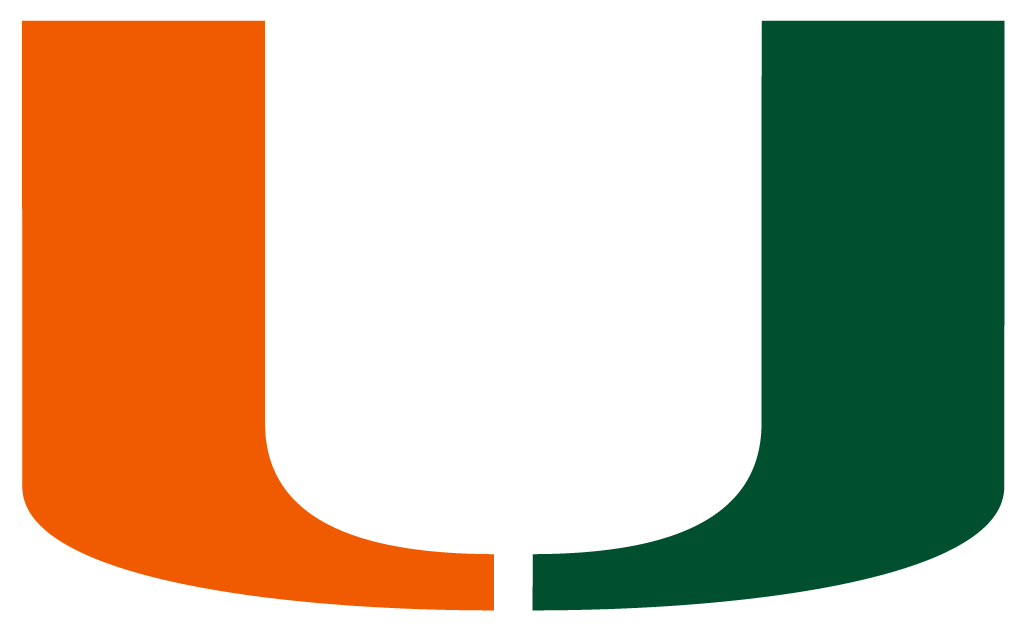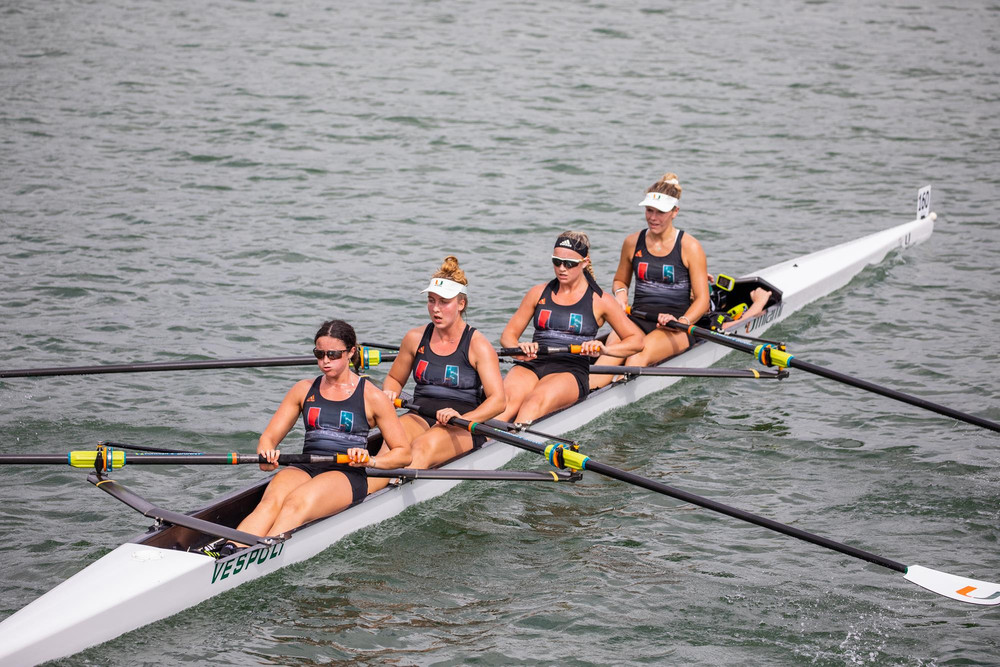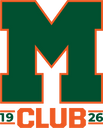
Diverse on Land, Unit on the Water
CORAL GABLES, Fla. – On any given day, it is not unusual to hear three of four different languages being spoken at the Ronald W. Shane Center, the home of the University of Miami rowing team.
This is a direct reflection of the geographic diversity on the team. Ten different countries are represented among the Hurricanes: Australia, Canada, Denmark, England, Finland, France, Germany, New Zealand, the United Arab Emirates and the United States.
With student-athletes hailing from those 10 nations, Miami is the most diverse team in the ACC. The next closest team is Louisville (seven), followed by Syracuse (five) and Virginia (four).
But what draws international rowers to UM?
For Amiens, France, native Marilou Chardin, the reasons to attend UM were straightforward: the quality of education and the collegiate student-athlete experience.
“I knew I wanted to study business, and speaking fluent English is a must, so I thought this would be a great opportunity,” Chardin said. “I was attracted to the idea of living the college American experience because, back home, it’s hard to reconcile rowing and school. Usually, once you graduate from high school, you can only focus either on school or attempt to be professional athlete.”
Miami allowed Chardin the opportunity to pursue both of her dreams.
In addition to a great education and the opportunity to row year-round, attending UM is attractive to international student-athletes because of the city of Miami itself.
Miami is a very diverse city and I think that is exciting to the international students. The international students are looking for something completely different from where they are coming from and I think Miami fits the bill on that.
Head Coach Dave Sanderson
Often times regarded as an “international city,” Miami is a multicultural mosaic of different cultures. The University of Miami feeds off of that, as 12 percent of the student body is comprised of international students.
Despite the welcoming environment of UM, there is still an adjustment when international student-athletes first arrive on campus.
“One of the biggest adjustments was the language,” Chardin said. “English isn’t my mother tongue, so it was rough at first to live in an environment where I could only speak English. I thought it wouldn’t be as hard because we do learn it at school, but having classes all day and practices in English it was an important adjustment.”
For senior Loretta Brueckner, being in a big city like Miami was drastically different than the small town that she grew up in.
“Miami is a new city that has so much to offer and there was a lot to take in at first, especially not having been in the U.S. before.” said Brueckner.
Not only do the international students have to get used to a new culture and language, but also they often times have to adapt to a new style of rowing. While clubs in the United States tend to focus on big-boat training (eights and fours), places outside the country spend more time on small-boat training (singles and pairs).
Each type of training has its advantages. In big boats, rowers learn how to cohesively row as a team of eight, while in small boats, rowers have more of an opportunity to focus on their technique and the fundamentals of rowing.
In addition to the technical aspects, the practice schedule is different for Chardin.
“Back home, I could only train after school, but here we can adapt our schedule to also have morning practices,” Chardin said. “We have a very supportive coaching staff and I’ve learned a lot here.”
Chardin was one of 11 international rowers on the 2019-20 Miami rowing team. Three of those 11 student-athletes just completed their freshman year as a UM rower. But how do incoming student-athletes find out about Miami?
The international recruitment process is slightly different in that, most times, there are many more logistical hoops to jump through. On a rare occasion, the coaching staff may never actually meet the rower in-person before they arrive on campus.
“A lot of times we discover them through international race results and research online,” Sanderson said.
Following the initial discovery, the staff walks through the evaluation of not only their rowing skills, but also their academic eligibility and if they are an overall fit for the program. At the end of the day, that fit is one of the most important parts as the Miami rowing team is a family.
“My favorite part of rowing at Miami is the team and the place where we get to row,” Brueckner said. “Getting up early in the morning was worth it every single day and knowing that we can see the sunrise and row in beautiful Miami Beach. Over the course of the years, I was able to witness a new team culture evolve and have all these hard-working athletes around me that I can trust and call my teammates.”
Being a part of the Miami rowing team is a “lifetime opportunity” in the words of Chardin and, no matter where they hail from, when they step into a boat on race day, they are all Canes.







